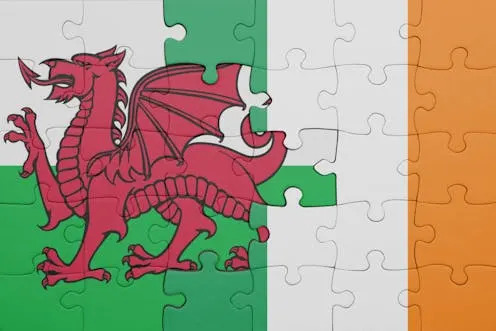How female 'Sherlock Holmes' changed Victorian Britain for the better
Female sleuths may seem the stuff of literary fiction: Mare of Easttown, Miss Marple, Enola Holmes. But startling recent research reveals that real women detectives were operating across Victorian Britain.
Hired by private enquiry agencies who needed agents who could infiltrate private homes by posing as housemaids or governesses, these women pursued cases that could be dangerous and seedy. Often, they were shadowing love rats. Men and women keen to use the new 1857 Divorce Act to jettison abusive or simply incompatible spouses employed female detectives to gather evidence that their other half was cheating on them. If you had servants, it was hard to be sure that your cook was not cooking your goose, from a legal perspective, and preparing to serve you a decree nisi for dessert.
One of the strangest Scottish cases of female detection is that of ‘Clara Layt’, who, in April 1897, was tasked by the London agency of Steggles and Darling with investigating suspicious events at Colstoun House, Haddington, by posing as a linen maid. Clara’s employer was the laird of Colstoun, William Hamilton Broun. He was concerned that various sinister happenings around the estate amounted to a malicious campaign against him that might pose a threat to his life and that of his wife, Lady Susan.
Living on tenterhooks
Rat traps had been sprung, eggs smashed in the henhouse, ponies had been mysteriously moved from their field and one had been injured and subsequently died. Hamilton Broun suspected that both his servants and his mail were being got at. He was living on tenterhooks and creeping about his country house in “silent boots” to try to catch the culprit.
Clara Layt spent almost a month at Colstoun, one of the most ancient, continuously occupied properties in Scotland, in her embedded role: interviewing the gardeners and maids, the local solicitor and barber. Very unusually, her reports are preserved in Register House in Edinburgh.
-(1).jpeg?crop=3:2,smart&trim=&width=640&quality=65)
They show how hard Clara worked. She had to get up and serve from 8am to 9pm as linen maid, mending sheets, tablecloths, and stair carpets. Meantime, she was conducting her below-stairs investigation while trying not to blow her cover.
Her findings make explosive reading. This isn’t because there was, indeed, a murderer at Colstoun, but because Clara’s investigation shows the palpable miseries of the class system from both sides. Lying beneath Hamilton Broun’s paranoia that he might be physically attacked were vicious rumours and character assassination.
Accusations of sexual indiscretions
Lady Susan – daughter of the Marquess of Dalhousie, Governor-General of India – was 17 years older than her husband and from a much higher social echelon. Before they married, William Hamilton Briggs had been a medical officer in the Indian army. The gossip Clara Layt recorded suggests that the working-class employees of Haddington jeered at him for having taken his wife’s name and sneered at Lady Susan.
They claimed that the Queen snubbed the couple, and – most troublingly – accused Lady Susan of sexual indiscretions with soldiers in India that had led her first husband to divorce her. They said that “you can see from her face that Lady Susan isn’t a virtuous woman”.
The servants also mistrusted the financial situation at Colstoun. Some complained that they had not been paid; the master was suspicious and “boozy after dinner”; the house smelled bad. They worried that “things would go wrong”.
Adulterous ex-husband
In fact, the servants Clara interviewed misjudged Lady Susan. She was the victim rather than the villain in her first marriage. It was her first husband Robert Bourke, the Earl of Connemara, who had repeatedly and openly committed adultery, including with her own maid – infecting Lady Susan with a venereal disease that she spoke about openly in the court case in which she divorced him.
If others could “see from her face” that she was “not virtuous”, it is possible that she had tertiary syphilis: a condition that typically produces marked facial ulceration and deformity. She was dying: not of any psychopath’s knife, but perhaps of the silent legacy of sexual abuse.
Little wonder that, harrowed by his wife’s illness and the toxic atmosphere of social stigma that surrounded her divorce, Hamilton Broun suspected there were spies and slanderers around him who were in the pay of his wife’s ex-husband. He hired the detective agency to confirm his worst fears and, when the investigation drew a blank, refused to pay for Clara Layt’s work.
Squalor, not glamour
The case had a sad denouement. Steggles and Darling sued Hamilton Broun, arguing that they had done their job, though no villain had been identified. The Edinburgh papers delighted in the scandal. Clara Layt was reprimanded for using “coarse language” (mentioning venereal disease) and the judge announced that her testimony could be disregarded. Lady Susan died before the case was concluded. There were no winners here.
However, to those fascinated – as I am – by the realities of the detective profession for Victorian women, the Haddington case is illuminating. ‘Clara Layt’, I discovered after complex sleuthing of my own, was really, if improbably, called Clara Jolly Death. She was the wife of Leonard Jolly Death, another professional detective. A mother of two young children in Fulham, she was spending a month playing a servant in Haddington while feeling intensely homesick.
Squalor, rather than glamour, was the norm for female detectives in this era. Many were working-class; many were parents. They were not always on the side of the angels, nor of their fellow women. But they forged a path that would eventually lead to women joining the police force and to recognition of women’s right to access all areas of public life.
Their work, while it was often criticised, drew attention to domestic abuse and to the inequalities Victorian women suffered in marriage. We can be glad that the servants’ hall is now a museum and that the modern female sleuth no longer has to darn while she detects.
Dr Sara Lodge is a senior lecturer in English at the University of St Andrews. Her book The Mysterious Case of the Victorian Female Detective is published by Yale University Press on September 24


